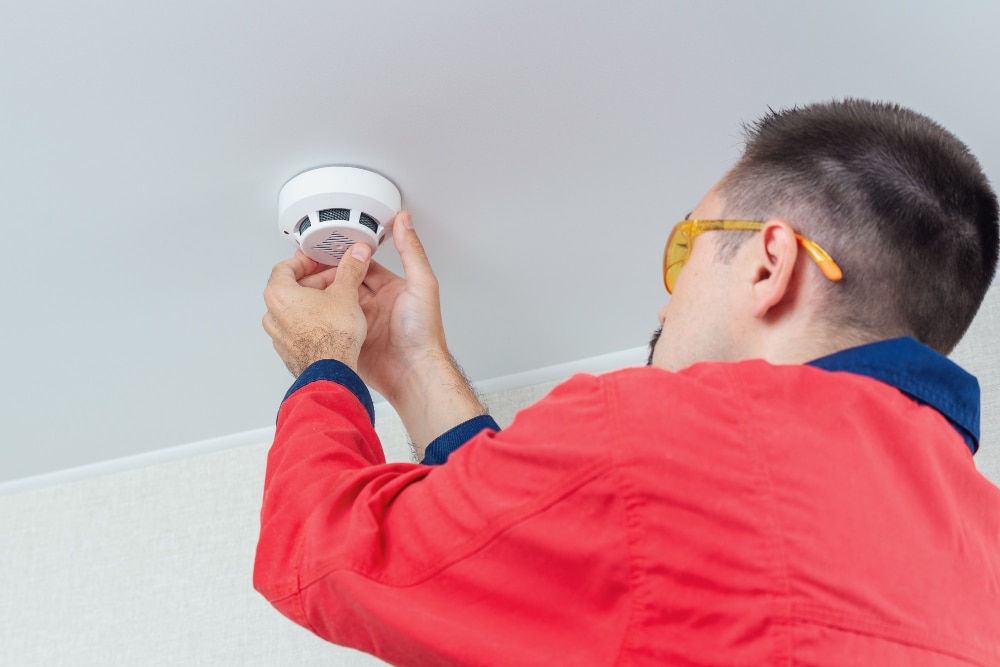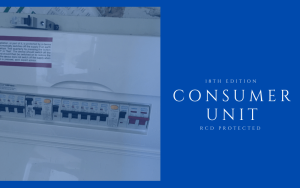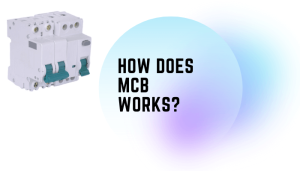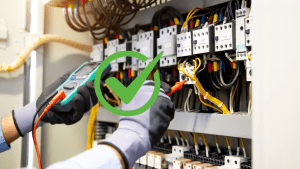When you’re tasked with ensuring fire safety in a building, navigating the BS5839 standards can seem daunting. These guidelines classify fire alarm systems into different categories, each designed to address specific aspects of fire detection and response. For instance, you might wonder whether a Category L system, which protects life, or a Category P system, focused on property protection, fits your needs best. Understanding these distinctions is not just about compliance; it’s about safeguarding lives and investments effectively. Let’s explore how choosing the right Fire Alarm Categories can impact your fire safety strategy and what might happen if you overlook these crucial details.
Overview of BS5839 Standards
Understanding the BS5839 standards is crucial for ensuring effective fire alarm systems. These comprehensive guidelines, integral to UK legislation, govern the planning, design, installation, commissioning, and maintenance of fire detection and alarm technology.
As you delve deeper, you’ll find that the standards are segmented into various parts, each tailored to specific premises or considerations.
Part 1, for instance, focuses on non-domestic premises, providing a meticulous framework for the installation of fire detection systems. It specifies the minimum grades and categories of systems, ensuring that the level of protection is appropriate for the building’s usage and layout. This section is vital as it dictates the effectiveness of detection and the speed at which occupants can be alerted and evacuated.
For effective compliance, you must regularly review your systems against the BS5839 recommendations. This includes detailed assessments of environmental factors and changes in building use, which could necessitate an upgrade or modification of the existing alarm systems.
Importance of Fire Alarm Categories
Recognizing the significance of fire alarm categories within the BS5839 standards not only enhances the safety protocols but also tailors the fire protection to the unique needs of each building.
As you delve into the complexities of fire safety systems, you must understand that each category serves a distinct purpose, defined through rigorous risk assessment processes. This categorization ensures that whether your building is a high-rise, an industrial complex, or a small school, the fire alarm system installed addresses the specific risks associated with the structure and its occupancy.
The correct application of these categories isn’t merely a regulatory formality; it’s a critical component of your building’s safety strategy. By adhering to the specified category, you mitigate the potential for devastating fire-related incidents and enhance the responsiveness of emergency services.

Each category, from L1 to P2, outlines varying levels of protection, dictating the placement and density of fire detection and alarm equipment. This stratification allows for a tailored approach, optimizing both the effectiveness and efficiency of the system in detecting and alerting occupants to fire emergencies.
Therefore, understanding and implementing the appropriate fire alarm category is pivotal in safeguarding assets and lives, aligning with both legal compliance and best practice standards in fire safety.
Category M Systems Explained
Within the framework of BS5839 standards, Category M systems are mandatory for all buildings, requiring manual activation by occupants via break glass units or call points. This manual initiation is crucial for facilitating prompt evacuation and emergency response actions.
Here’s a closer look at the key elements and implications of Category M systems:
- User Activation: Unlike automatic systems, you’re responsible for initiating the alarm. This necessity means every occupant must be familiar with the locations of manual call points and understand how to operate them.
- Compliance and Installation: You must ensure these systems are installed at strategic locations as dictated by BS5839. This includes exits, hallways, and areas of high traffic.
Regular maintenance and testing are also mandated to uphold system integrity and responsiveness.
- Integration Capabilities: Category M systems can be integrated with other fire protection measures such as fire doors and suppression systems, enhancing overall safety protocols.
Understanding the category M features and category M applications helps in achieving a higher level of preparedness and compliance.
Being well-versed in these systems isn’t just about following regulations; it’s about actively contributing to the safety of every individual in the building.
Understanding Category L Systems
Category L systems, crucial for life safety, automatically detect fire presence and initiate alarms to facilitate immediate evacuation. You must understand that these systems are designed based on a detailed risk assessment that evaluates the specific needs of a building’s occupants and its structural characteristics. The primary goal is to protect life by ensuring everyone can safely exit the premises in the event of a fire.
When planning your system design, it’s essential to adhere strictly to BS5839 standards, which provide the framework for installing and maintaining fire detection and alarm systems. This ensures compliance and maximizes safety. Each component and placement must be meticulously chosen to cover all necessary areas without compromise.
Here’s a brief breakdown of key considerations:
| Factor | Detail |
|---|---|
| Coverage | Complete vs. partial areas |
| Alarm Zones | Number and types of fire zones |
| Sounders | Distribution and sound levels |
| Detection Type | Heat, smoke, multi-sensor |
| Maintenance | Regular checks and system updates |
Features of Category P Systems
Fire protection systems, specifically Category P systems, focus on property protection by detecting fires early to minimize damage to buildings and contents.
You’ll find that these systems are vital in environments where the protection of assets is a priority over the evacuation of individuals.
Here are the key features of Category P systems:
- System Specifications: Category P systems are designed with rigorous specifications to ensure that fire detection is both rapid and reliable.
The placement of detectors and alarms is strategically planned to cover all high-risk areas within the property, adhering strictly to BS5839 standards.
- Installation Guidelines: The installation of these systems must comply with detailed guidelines that dictate every aspect from wiring methods to control panel settings.
It’s crucial that you engage with certified professionals who understand the nuances of these guidelines to guarantee both functionality and legal compliance.
- Customization and Scalability: Depending on the size and nature of your property, Category P systems can be tailored to suit specific needs.
This scalability ensures that as your property evolves, so too can your fire protection strategy, all without compromising on safety standards.
Choosing the Right Category
When selecting the appropriate fire alarm category for your facility, it’s essential to assess both the unique characteristics of your property and the specific risks associated with it. Your system selection must align with the intended purpose of the fire alarm system, which involves detailed risk assessment procedures.
This analysis includes examining potential sources of fire, occupancy levels, and the nature of activities conducted within the premises.
You’ll need to consider the layout and size of your building. Complex structures with multiple floors or high-risk areas demand more comprehensive fire alarm systems, such as those found in Category L1 or P1, which offer the highest level of protection by covering all areas of the building.
The choice of a fire alarm category should also reflect the speed at which evacuation is necessary. Buildings with vulnerable occupants, like care homes or hospitals, require systems that provide the earliest possible warning to ensure safe evacuation, necessitating a more sensitive system setup.
Ultimately, your decision should be backed by a thorough understanding of BS5839 standards to ensure that your system selection not only meets legal requirements but also provides optimal safety for your property and its occupants.
Compliance and Legal Requirements
Ensuring compliance with legal requirements is crucial when installing a fire alarm system in your facility. Adhering to the latest BS5839 fire safety regulations not only safeguards your property but also ensures you meet your legal responsibilities, minimizing liability issues.
Here’s what you need to focus on:
- Conduct Comprehensive Risk Assessments: Before installation, perform a detailed risk assessment to identify potential hazards. This assessment will guide the selection of the appropriate fire alarm category and ensure that all aspects of your facility are adequately protected.
- Understand and Implement Safety Standards: Familiarize yourself with BS5839 standards. Compliance with these standards isn’t optional; enforcement agencies may conduct compliance audits to ensure adherence. Non-compliance can lead to severe insurance implications and penalties.
- Regular Compliance Audits: Schedule regular audits to verify that your fire alarm system aligns with evolving safety standards and legal requirements. These audits help catch non-conformities early, preventing costly enforcement actions and enhancing overall safety.
Maintenance and Monitoring Essentials
Regular maintenance and precise monitoring of your fire alarm system are essential to ensure it functions effectively at all times. You’re tasked with adhering to stringent BS5839 standards, which demand not only routine checks but also periodic system upgrades to keep up with technological advancements and regulatory updates.
Fire alarm testing should be scheduled bi-annually, though more frequent checks might be necessary for high-risk environments. This not only ensures compliance but also enhances the system’s reliability and longevity. Don’t overlook the importance of detailed documentation; every test, anomaly, or adjustment must be meticulously recorded to ensure transparency and accountability.
Here’s an overview of essential tasks to keep your system in top condition:
| Task | Frequency |
|---|---|
| Visual Inspections | Weekly |
| Fire Alarm Testing | Bi-annually |
| System Upgrades | As needed |
These tasks are crucial for maintaining operational integrity and compliance with BS5839. System upgrades may include software updates or replacing outdated components, which could significantly increase system efficiency and effectiveness. Always consult a certified technician to perform these upgrades, ensuring they align with the latest safety standards and technological innovations. Remember, a well-maintained system is your first line of defense in fire safety.
Case Studies and Real-World Applications
Exploring case studies and real-world applications provides invaluable insights into the effectiveness of fire alarm systems across various settings.
As you delve deeper into the technical nuances and regulatory frameworks, you’re likely to appreciate the critical role that fire alarms play in safety and compliance.
Here are three pivotal case studies highlighting the diverse application of BS5839 standards:
- High-Rise Residential Complex
In 2018, a fire in a London high-rise triggered the BS5839 compliant alarm system, which successfully alerted all residents in time.
Analysis revealed that adherence to category L1 systems ensured maximum coverage and early detection, significantly minimizing potential casualties and structural damage.
- Educational Institution
A university equipped with category L2 fire alarm systems faced a fire outbreak in its laboratory.
The precision of the system’s operation allowed for quick evacuation and localized firefighting efforts, preventing the spread to adjacent areas and safeguarding valuable research materials.
- Commercial Retail Space
After transitioning to a category P1 system, a major shopping center managed a fire incident with zero casualties.
The system’s design to cover all potential fire risks proved its worth, allowing for swift emergency response actions.
These case studies not only demonstrate compliance with BS5839 but also underscore the importance of choosing the right category to meet specific environmental needs and ensure safety.










